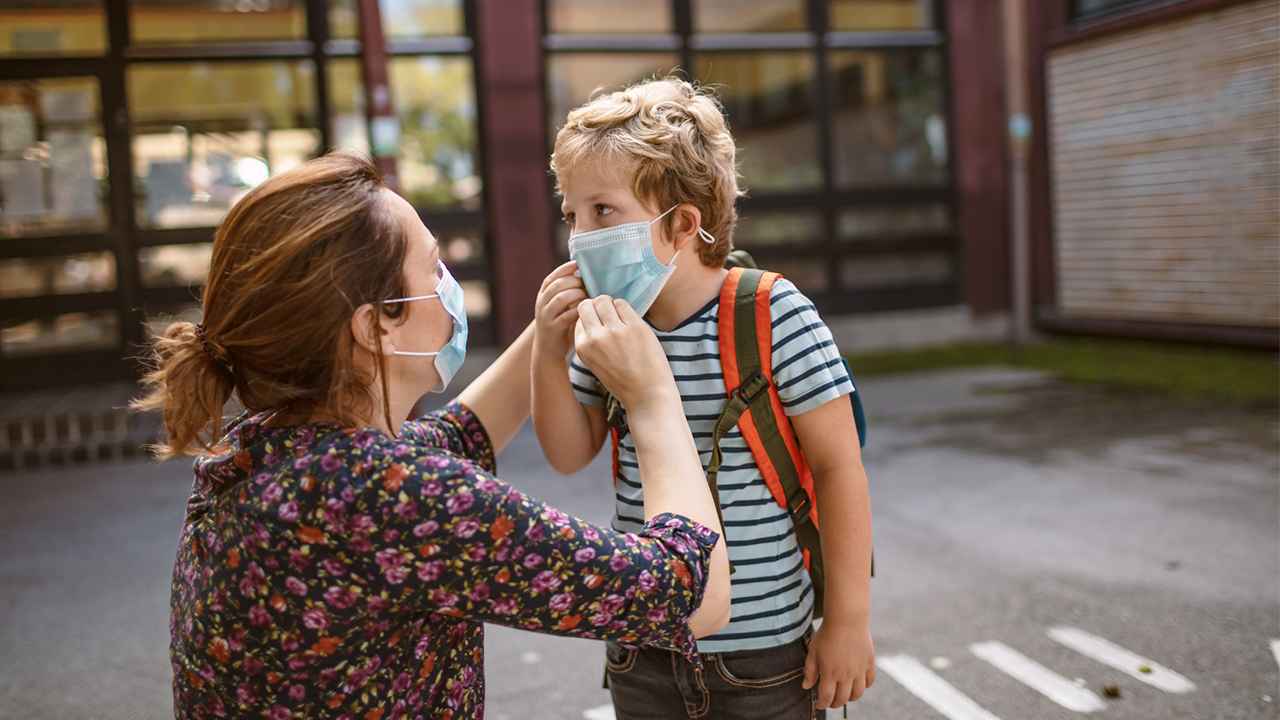It’s no surprise to experts that the coronavirus has mutated, but it’s definitely worrisome. Here’s what parents need to know about the new COVID-19 variants.
Just as Canadians felt that we were over the worst of the coronavirus, new variants arrived. Hundreds of cases of B.1.1.7, the extra-contagious U.K. variant, have been confirmed, and modelling in Ontario predicts that it will dominate the province by mid-March. And now, the South African variant—which also seems to be more contagious—is here as well.
Does this mean our dreams of falling COVID curves and outdoor spring playdates are dashed? We asked three experts what we need to know about the new variants.
Why has COVID-19 changed?
Is it a virus’s destiny to mutate: They duplicate to spread and survive, genetic differences appear, and different versions—usually more infectious, less deadly ones—take over. In fact, the coronavirus strain the world has been fighting since last March is itself a mutation (a more infectious one that dominated the Wuhan one in Italy).
Since then, it’s continued to change, but those variations were mostly insignificant until the U.K. one appeared. “The virus has been marching along, mutating and changing,” says Sarah Otto, an evolutionary biologist who is a member of the B.C. Covid modelling team. “It’s almost been like a clock—we can measure time passing by these variants. And then it’s like time sped up for a moment [with the new variant].” Genomic testing has led scientists to suspect that the B.1.1.7. developed in one patient with a weakened immune system, which let the virus mutate inside them over an extended period of time.
How far has the new variant gotten in Canada?
The B.1.1.7. variant has been confirmed in over 429 cases in Canada (this changes daily; up to date numbers can be found here).
Most of those cases are clustered in Ontario, including an outbreak at a long-term care centre that’s responsible for over 100 cases. Alberta also has 149 cases (at press time) and it’s been found in Quebec, too.
How is the U.K. variant different?
The new variant contains 23 mutations, and some of those affect the spikes on the outside of the virus. That change makes it easier for the variants to attach themselves to our cells, and spread. You can imagine it as a better key for a lock, says Otto.
B.1.1.7. is about 50 percent more contagious than the current strain. There’s also some data from the U.K. that suggests it’s 30 percent more deadly, though that data is still very preliminary, says Zain Chagla, an infectious disease physician and assistant professor at McMaster University in Hamilton, Ont.
The good news is, the current vaccines are effective against the B.1.1.7 variant. “Both Pfizer and Moderna have done neutralization studies, the antibody levels are almost identical [with the variant],” says Chagla.
What does B.1.1.7 mean for kids?
Brand new research from the medical journal The Lancet had encouraging results; researchers found that when kids catch the B.1.1.7 variant, it doesn’t result in a significantly different illness than the original strain—and we know that severe COVID-19 is rare in kids.
Children are also less likely to spread the current strain of the virus than adults are. Research from Public Health England found that the B.1.1.7. variant is about half as contagious in kids under 10 as it is in adults. (It fell somewhere in the middle for teenagers.) So kids are still less likely to spread it than grown-ups—but they will, like adults, spread it about 50% more quickly than our current version.
That means that ensuring schools have adequate ventilation, that kids wear masks and clean their hands regularly, and social distance is even more important than ever. Having access to quick testing and paid sick days to allow families to stay home is also important, says Nisha Thampi, medical director of infection prevention and control and pediatric infectious diseases physician at CHEO, a paediatric health-care and research centre located in Ottawa.
On the parents side, making sure that we take our kids for tests if they have symptoms or are a high-risk contact is going to be crucial. “It’s so important for governments to ensure that all of our safety and our surveillance measures are robust,” says Thampi. “But public health units can only follow up on the people who come for testing. If parents choose to keep kids at home for two weeks instead of getting them tested, we can’t identify the chain of transmission and break it.”
What about other variants?
Other variants are also in play. “We have four major types that are being watched: the U.K., the South African, and two variants in Brazil,” says Chagla. The South African variant is here; it has been confirmed in 28 Canadian cases. Preliminary data suggests it might also be about 50 percent more contagious than our current strain, and that vaccines might be less effective against it—though they are expected to still offer significant protection.
How can we stay safe?
“The variant hasn’t changed the way these diseases circulate—they’re still transmitted primarily by droplets and aerosol transmission in close contact,” says Chagla. So the steps we should take to protect ourselves are the same: social distance, wear a mask, stay in your bubble, and wash your hands thoroughly and frequently. The fact that the new variant is more contagious means there’s less room for error we need to take the same precautions, but make sure that they’re followed to a T.
And it doesn’t mean it’s hopeless, says Otto. “We’ve done a great job in Canada of bending the curve again and again. [If B.1.1.7. takes over] this is going to be a harder curve to bend down, but it’s still bendable—we just have to push 50 percent harder.”
